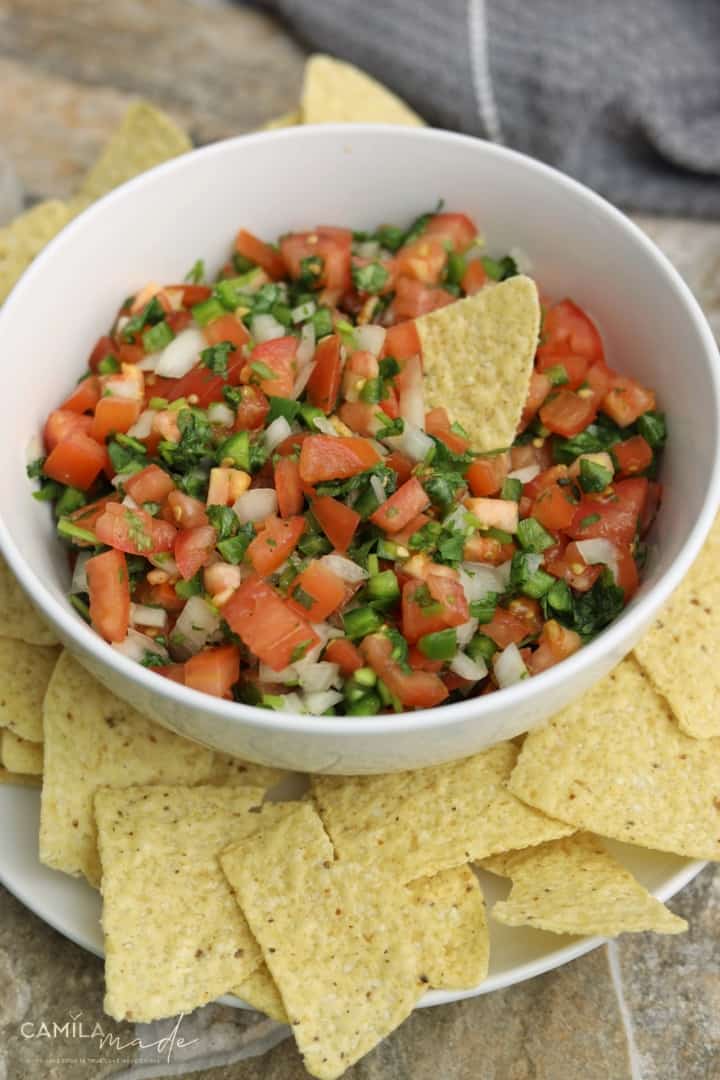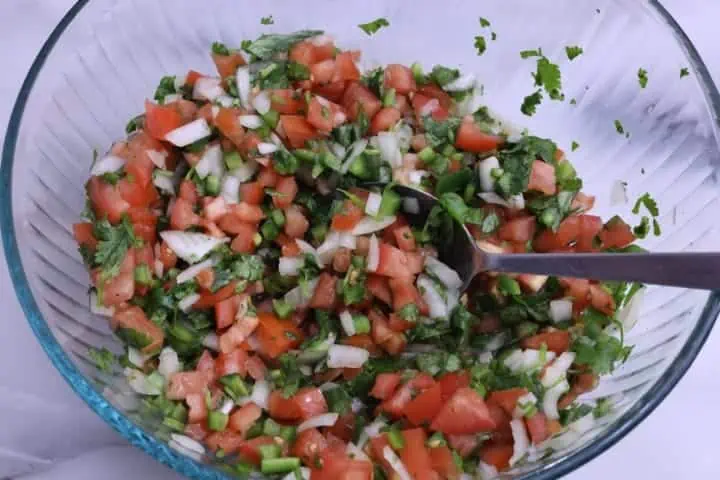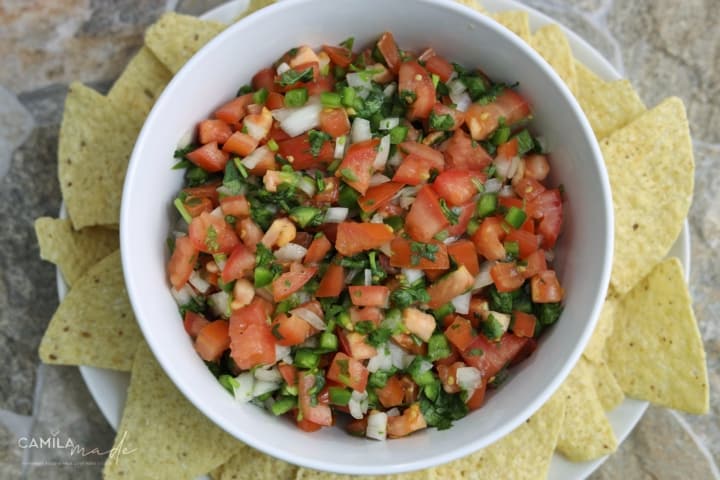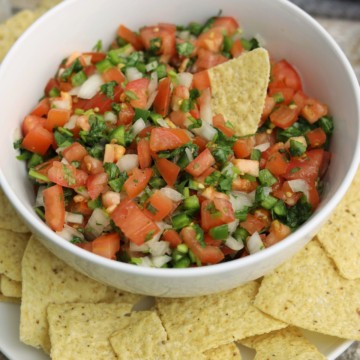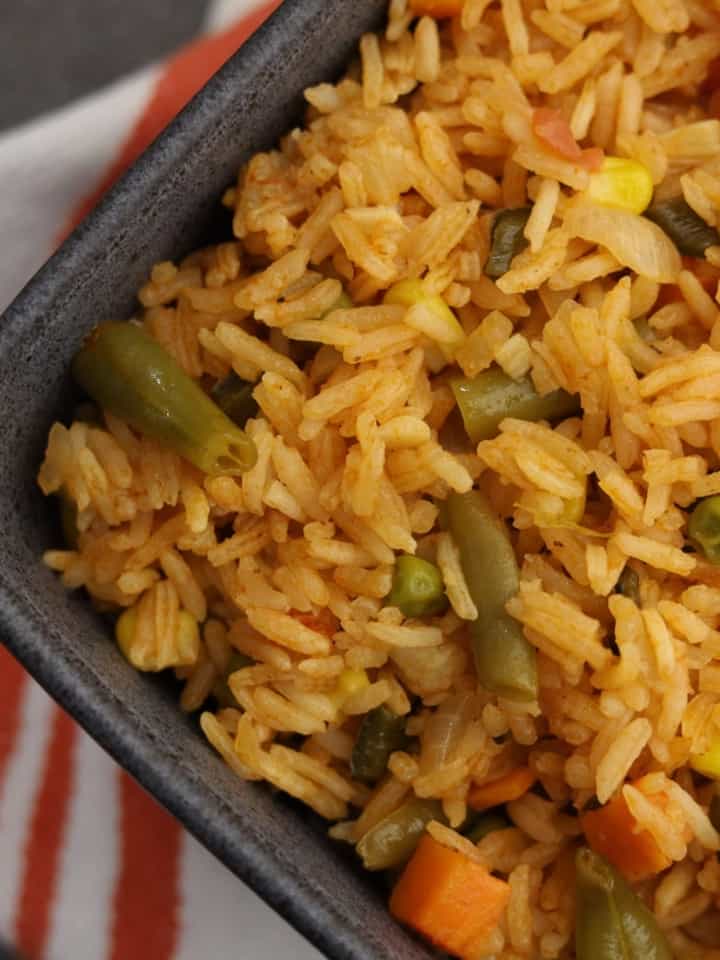Besides being quick, this easy Pico de gallo recipe is a tasty condiment to use in almost any Mexican dish, such as burritos, quesadillas, and even scrambled eggs.
They can be a great addition to appetizers, served with tortilla chips, or used to top Carne Asada or Grilled Chicken in a main dish.
For More Mexican-inspired recipes, check out this Salsa, Mexican Cheese Dip, Roasted Tomatillo Sauce, Guacamole, and 15 Minutes Tomatillo Sauce.
How to Make Pico de Gallo
Note: The full instructions are provided in the recipe card below.
Combine tomatoes, cilantro, onion, jalapeño (unseeded or seeded), lime juice, kosher salt, and ground black pepper; mix well. Taste and adjust the seasoning by adding kosher salt, ground black pepper, or lime juice as needed. Serve immediately or cover and refrigerate to allow the flavors to meld for 1 hour or up to 1 day. Enjoy!😋
Watch How to Make It
Related Recipes:
- Guacamole
- Chipotle Tomatillo Salsa
- Mexican Shrimp Cocktail
- Homemade Salsa
- Mexican Rice
- Camarones a la Diabla
Recipe
Easy Pico de Gallo
Ingredients
- 5 medium to large sized fresh Roma Tomatoes , diced small
- 1 medium yellow onion , diced small
- 3 fresh jalapeños , finely chopped ( stemmed and seeded for for mild Pico de gallo
- 1 small Bunch of Cilantro leaves , roughly chopped (discard the long leafless stems before chopping)
- 2 limes or lemons , juiced (about ¼ cup), or add more as needed
- 1 teaspoon kosher salt , adjust to taste
- ¼ teaspoon ground black pepper , adjust to taste
Instructions
- In a large bowl, combine tomatoes, cilantro, onion, jalapeño (unseeded or seeded), lime juice, kosher salt, and ground black pepper; mix well.
- Taste and adjust the seasoning by adding kosher salt, ground black pepper, or lime juice as needed. Serve immediately or cover and refrigerate to allow the flavors to meld for 1 hour or up to 1 day.
Notes
All nutritional information is based on third-party calculations and is only an estimate. Each recipe and nutritional value will vary depending on the brands you use, measuring methods, and portion sizes per household.

